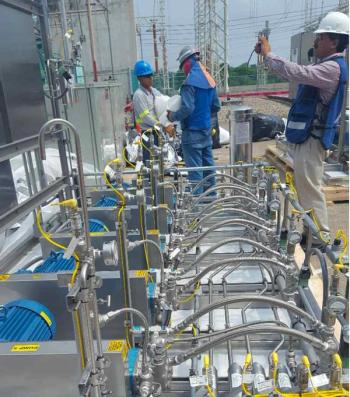
WTUI 2023 Session Coverage: Fogging Outperforms Other Cooling, Power-Boosting Tech, Fueling an Investment in Innovation
After analyzing different turbine-cooling methods, ProEnergy Services decided to innovate its own fogging technology that can be combined with its wet-compression technology.
Improvements in wet fogging—a process the directs a fine mist into the inlet airflow of a turbine to cool the air with the goal of increasing power and efficiency—was one of several technologies explored at the Western Turbine Users Inc. (WTUI) conference and exhibition, held in San Diego, California, March 12–15, 2023.
In the session, Increasing Turbine Plant Performance by 10% Through Wet Fogging, ProEnergy Services analyzed various turbine-cooling methods before determining its best investment would be an innovative fogging technology that can be combined with its wet-compression technology for superior outcomes, according to Constantin Dinu, a senior performance engineer at ProEnergy Services. The goal of the system, still under development, is to improve a plant’s power output by 10%.
“The project aligns with our efforts to continually improve engine performance,” Dinu said.
Aeroderivative gas turbines, which comprise the company’s client base, have a steeper power lapse than heavy-duty turbines as the ambient temperature increases, which justified ProEnergy’s interest in fogging.
“We operate a couple of plants in Houston, where the weather is hot, and we have customers and projects in areas where fogging makes a lot of sense—that’s one reason we started developing this as an enhancement technology,” he said.
Dinu shared some of the company's findings in its comparison of fogging against other technologies:
- Fogging outperformed NOx water over-injection, which had limited impact at high temperatures. NOx water also hurt the heat rate and may impact the combuster and hot gas path life. Based on Dinu’s studies, the maximum benefit shown from increasing NOx water is a boost of approximately 2 MW of power at temperatures typically below 80°F. At higher temperatures, the benefit is limited.
- Fogging also outperformed evaporative cooling for a number of reasons, including the cost of the media used in the process. “You can recover an investment in fogging more than twice as fast as for an evaporative system,” he said.
A well-designed and optimized fogging system can achieve an evaporation effectiveness close to 100%. A power generator should select the fogging system with the highest effectiveness, he noted. A fogging system may offer a 20° temperature drop on a 95° day with about 40% relative humidity, but such numbers are hard to replicate over a plant’s ambient temperature range, Dinu said.
His advice: Familiarize yourself with the evaporative effectiveness and whether that can be guaranteed within your area’s ambient temperature range.
Additionally, the fogging nozzle design is critical as is the water supply pressure, spray characteristics, and distribution of the fogging nozzles.
Newsletter
Power your knowledge with the latest in turbine technology, engineering advances, and energy solutions—subscribe to Turbomachinery International today.





